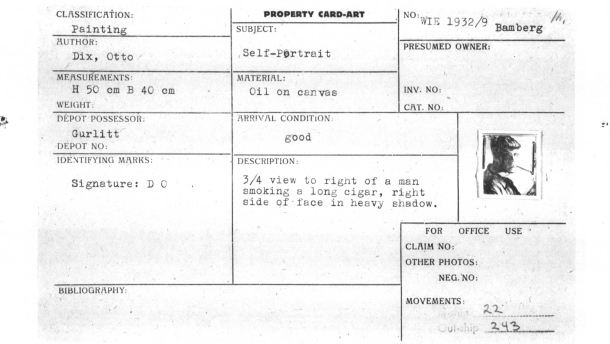Der Spiegel reports today (link in German) about how German museums are joining the chorus of frustration about the lack of information about the Hildebrand and Cornelius Gurlitt collection find. From this perspective, this development is not a surprise. I was speaking to an international law class last night at Sarah Lawrence College, and one of the students asked me what the reaction in Germany would be. My feeling was that sooner rather than later, the German museum community, and likely the federal government, will push for a forward-looking solution. Present-day Germany takes questions about the Holocaust quite seriously, and for this collection to have turned up in Germany is sparking an embarrassment that could lead to more decisive action. The problem right now seems to be that everyone is waiting for someone else to make the first move.
Christopher Knight at the Los Angeles Times hints today that many of the 1,400 works may be works on paper or editions in a series, whose title could be harder to sort out that unique paintings. That will likely be driven by the quality of 1930s inventories, but this is a challenge that provenance researchers have faced before.
Several sources are reporting that Gurlitt claimed to know where the Amber Room was. The Amber Room was a room empaneled with amber panels, designed for Schloss Charlottenburg in Berlin, and later installed at the Berliner Schloss. Shortly thereafter, it was given to Peter the Great of Russia as a gift. During the siege of Leningrad during World War II, curators tried to evacuate the room but could not. German soldiers quickly did, and shipped it to Königsberg (now Kaliningrad) in what was then East Prussia. Few areas were as chaotic as East Prussia in the final months of the war, and the Amber Room was never seen again. Rumors have abounded since then about its fate, whether taken back to Russia or destroyed.
It is possible Hildrebrand Gurlitt knew something, but it certainly seems unlikely. By the end of the war, his homes had been destroyed, and he was apparently guarding the now-found collection in secret. It seems hard to imagine that he was in touch with events on the rapidly-advancing Eastern Front, a zone of destruction that can scarcely be overstated. It reminds me more of the annual speculation about the location of the paintings stolen from the Isabelle Stewart Gardner Museum: consider the timing and consider the source.
FAZ breaks the news that the previously-unknown self-portrait of Otto Dix was, in fact, known. The paper also interviews HARP researcher Willi Korte about his location in the U.S. National Archives of the Hildebrand Gurlitt interview and inventory. This card for the Dix self portrait was from the Wiesbaden Collecting Point.
The news cycle is definitely slowing; genuinely new revelations are coming out in far fewer numbers than when the story first broke. But everyone is waiting for the Bavarian authorities to make the list of works publicly available.




